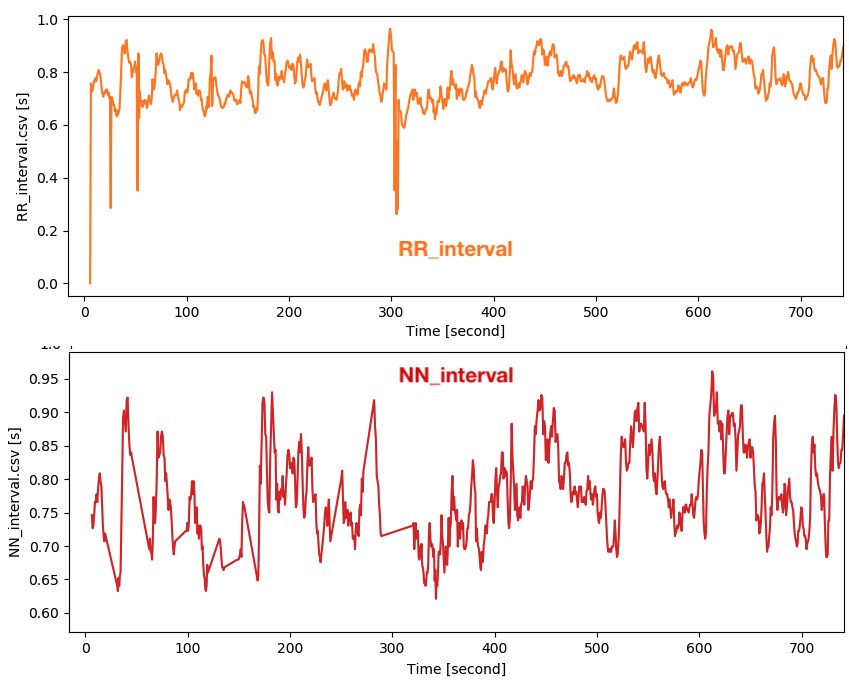Difference between RR interval and NN interval
The RR interval represents the time between each detected heartbeat, measured from peak (R) to peak (R) on the QRS complex. The NN interval represents the RR interval data but with added filtering to remove artifacts and noise present in the data making some RR intervals unreliable. Below is a brief comparison of the 2 datatypes/data channels:
RR interval: Time between two detected heartbeats, calculated for every QRS event.
- Method of calculation: The time difference between the QRS and the previous QRS.
- Frequency: Async
- Source data: QRS which is based on ECG
- Quality: rrintervalstatus.csv
- Unit: second

NN interval: Time (normalized) between two detected heartbeat detections, calculated for every QRS event.
- Method of calculation: The time difference between the QRS and the previous QRS.
- The NN interval is based on the RR interval where unreliable RR intervals are excluded. Moreover, an RR interval differing by more than 150 ms from the 5 adjacent intervals is also excluded.
- Frequency: Async
- Source data: ECG
- Quality: nnintervalstatus.cvs
- Unit: seconds
More information on the data filtration of the NN interval can be found in our API documentation.